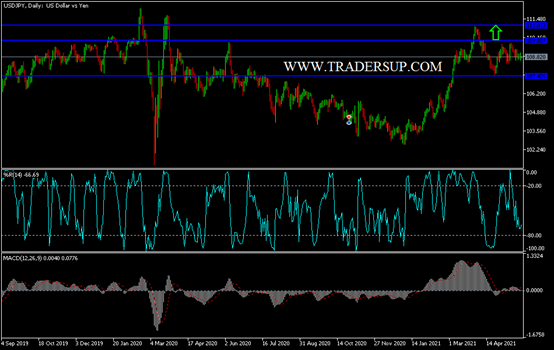In early trading on Wednesday, the currency pair moved towards the 108.88 level. The dominance of the bears continues to dominate the performance of the currency pair amid a clear abandonment by investors from the US dollar. The lack of effective economic releases in the markets confirms the reason for the currency pair to move in a limited range. Analysts believe that the recent weakness in the world's de facto reserve currency is linked to persistent expectations among investors that the global economy is in a growth phase that still has a lot to operate. The return payment on sovereign bonds will remain close to its historical lowest levels, which are conditions that are usually associated with the weakness of the US dollar.
“Consolidation in long-term sovereign bond yields may indicate that financial markets are increasingly convinced that major global central banks will not prematurely reduce policy support despite improved economic activity and mounting inflation pressures,” said Elias Haddad, CBA’s chief currency strategist. . This could increase the rally in risky assets and undermine the dollar. ”
Also, a large part of the dollar's recent losses comes on the back of fresh comments from the US Federal Reserve.
Lyle Brainard, the Governor of the US Federal Reserve, gave a speech in which she maintained the official line that the Fed would not agree to reduce monetary support to the economy for a while now. The letter emphasized the Fed's policy of keeping interest rates as low as possible until the US labor market shows a tangible improvement, even if inflationary pressures are high.
Commenting on the remarks, SocGen Kate Jokis, a currency analyst at Société Générale says: “Lyle Brainard has made headlines among the various spokesmen at the Fed, and has sounded the speech and cautiously, emphasizing the temporary nature of the current high inflation. It is just what the bulls in the market wanted to hear. ”
In its April FOMC statement, the Fed said that US inflation is on the rise but continues to describe the factors driving up inflation as "temporary". It is this desire by the Fed to keep interest rates low that has highlighted a large part of the dollar's weakness recently, as analysts say the dollar is likely to find sustainable support only once the Fed turns its course and signals an exit from quantitative easing..
While the US economy is definitely on the path to recovery, Brainard and her colleagues at the Federal Reserve feel that the US economy still has some arenas to recover before they can withdraw support. CNN Business and Moody's "Return to Normal Index" indicates that the US economy is still operating at 90% of its pre-pandemic capacity, indicating the remnants of a major "recession".
Economic forecasters predict that many US jobs will be created during the remainder of the year, but the states that have suffered the most, such as New York, Nevada and Hawaii, are still all lagging behind national workers.
According to the technical analysis of the pair: On the daily timeframe chart below, the general trend of the US dollar against the Japanese yen is still down, and no actual reversal of the trend will occur without the bulls moving in the pair to the psychological resistance level of 110.00, otherwise the general trend will remain down. I prefer buying the currency pair from every downside level and the closest support levels for the pair are currently 108.35, 107.70 and 107.00 respectively


